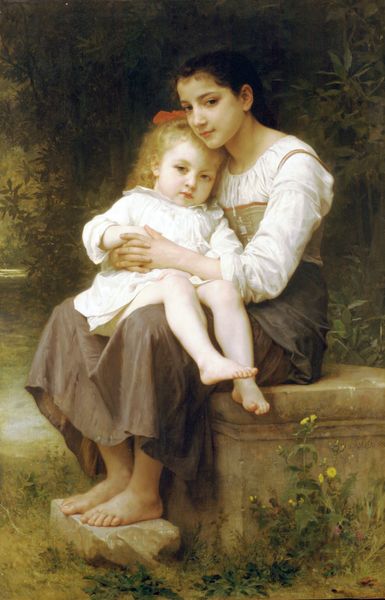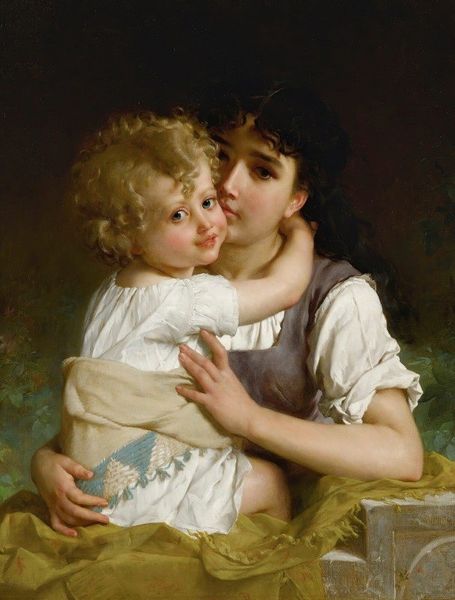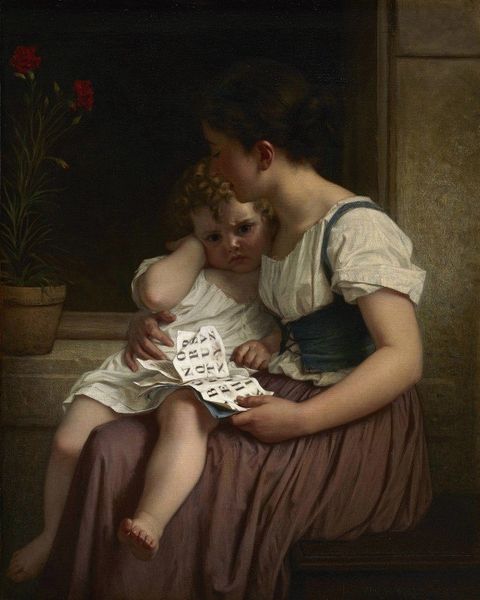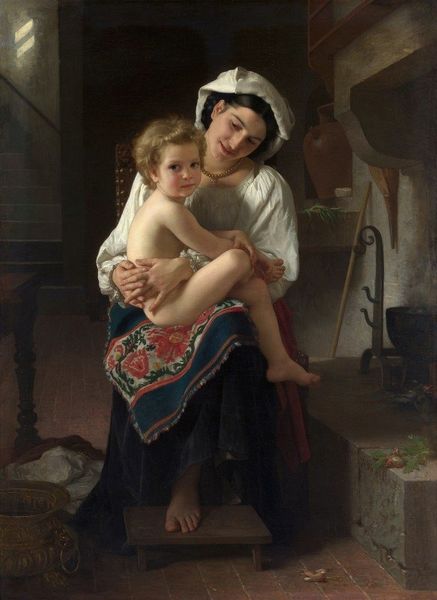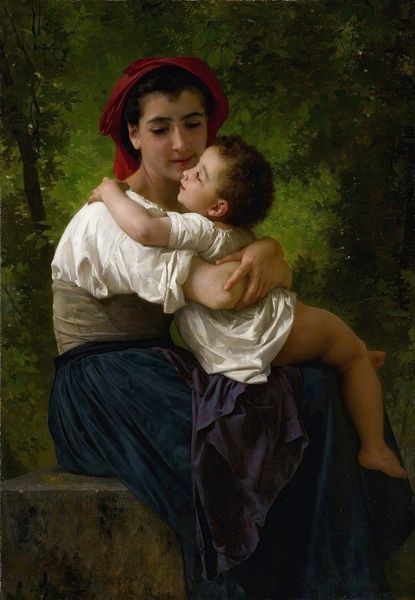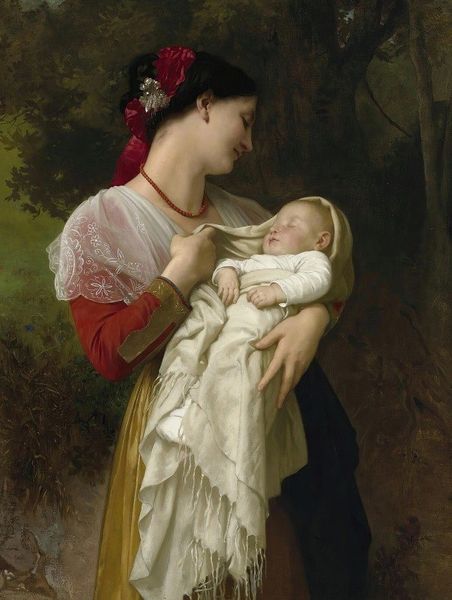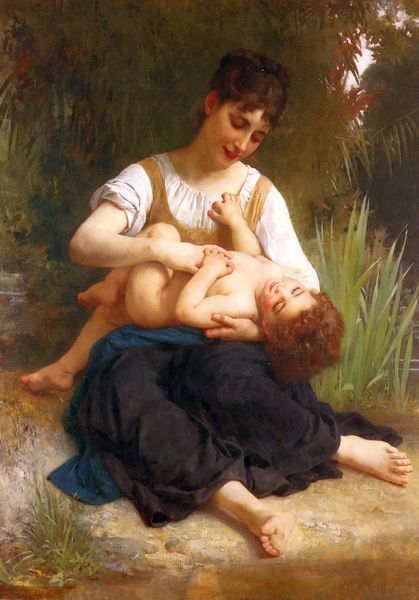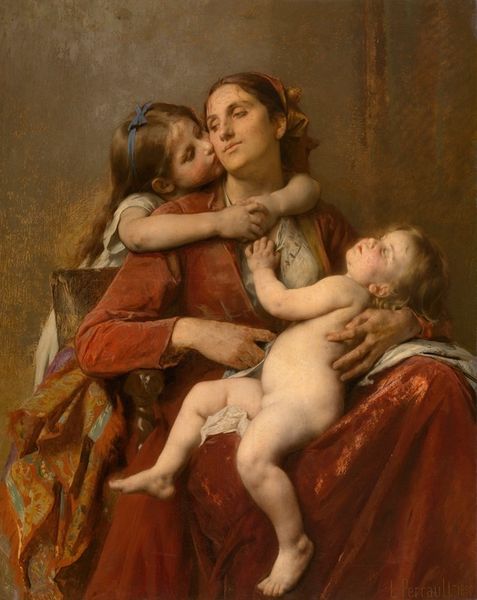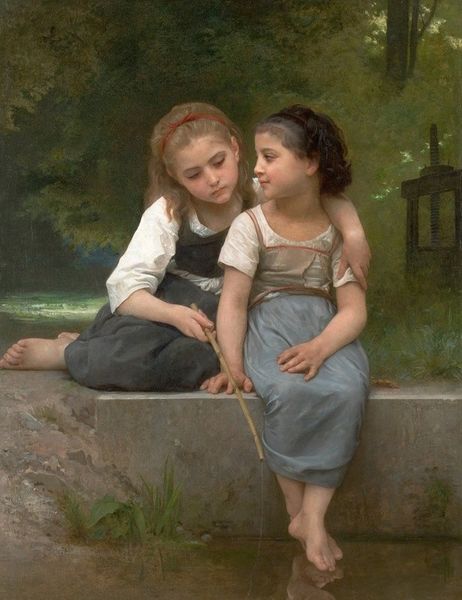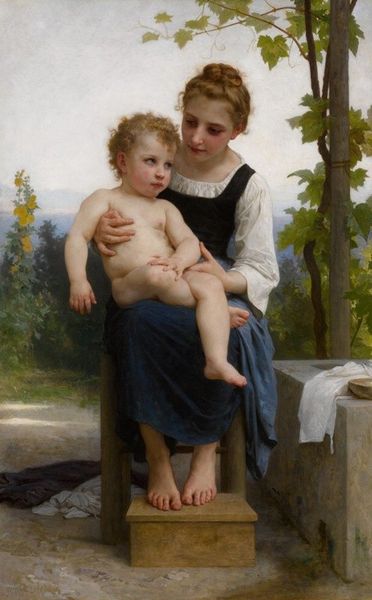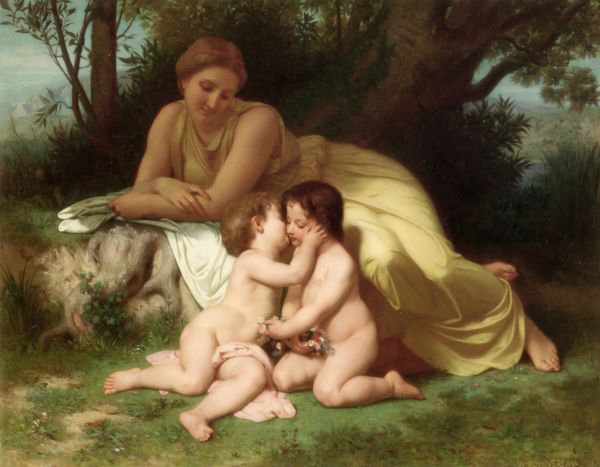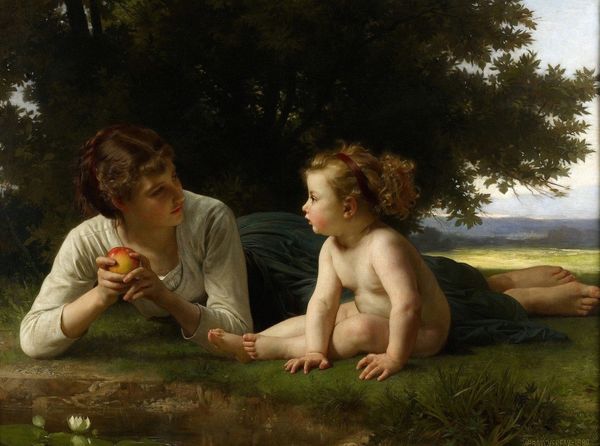
Copyright: Public Domain: Artvee
Editor: We’re looking at "Mother With Child," an 1894 oil painting by Léon Bazile Perrault. The scene depicts a mother and daughter in an intimate moment. There's a real tenderness that radiates from the piece, and the setting feels both domestic and timeless. What's your take? Curator: It's interesting you pick up on tenderness. On the surface, yes, there’s a seemingly idyllic portrayal of motherhood, rendered in a highly academic, sentimental style. However, consider the era. Late 19th century France was grappling with significant social change, including evolving roles for women. Editor: How does that relate to this particular painting? Curator: Think about the painting as a social construct, one that idealizes motherhood in response to anxieties around women's increasing presence in the public sphere. The painting could be subtly reinforcing a certain ideal – a return to the domestic sphere, perhaps? Consider how images of women breastfeeding were employed politically. Is this mother's gaze one of contentment or resignation? Editor: Resignation... I hadn't considered that. The blue knitting on the left, then – is it suggesting her confinement to domestic work? Curator: Exactly. And while Perrault paints it with seeming admiration, what commentary is he making on this life as a woman? It could be subtle resistance too, suggesting women can have agency, even within the domestic sphere. Does that change how you view that moment of intimacy? Editor: It does. It's like, it is lovely, but it also comes loaded with all these expectations and constraints. So, the artwork prompts me to think beyond its mere aesthetic value and really investigate its social context, especially on the roles that were afforded to women. Curator: Absolutely!
Comments
No comments
Be the first to comment and join the conversation on the ultimate creative platform.
